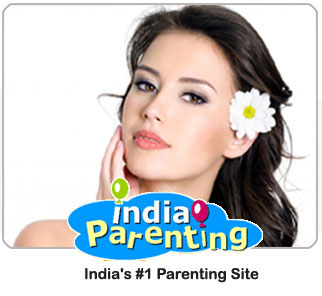 Name: arshad khan
Name: arshad khan
Is Your Shampoo, Toothpaste, and Soap
Destroying Your Health?
Have you read the ingredient label on your shampoo lately?
How about the label on that bottle of bath gel?
Or toothpaste?
Or moisture cream?
If you have, you most certainly ran into a practically endless list of hard-to-pronounce, even harder-to-decipher chemical names.
Have you ever wondered if all those chemicals are really safe?
If you are worried about the ill effects that daily doses of chemicals in your personal care products can have on your health, you have good reason for concern. The list of potentially harmful ingredients found in our everyday products is staggering. There are literally thousands of chemical compounds formulated into the personal care products, cleaning supplies and processed foods that we use and consume daily.
What do these ingredients do? What kinds of reactions can they cause? What happens inside our bodies when these chemicals build up over decades of use? What happens when they interact with one another? And what is the FDA doing about it?
What Happens to Petrochemicals in Our Body?
The truth is, the petrochemicals found in most shampoos and cosmetics can be absorbed through the scalp and skin and, over time, accumulate in the organs and tissues. This accumulation may result in mounting brain, nerve, and liver damage, according to a recent government study (Matthew et al., 1995).
The human body and its defenses have evolved over long periods of time to keep us functioning and healthy. But the chemical invasion of the last 50 plus years is just too much, too fast. The body simply cannot deal with so many foreign substances all at once.
Remember the \" Sick Building Syndrome?\" This came about as commercial construction materials were developed with toxic compounds. Nobody ate those materials, but people still got sick just from breathing the air near the materials. All the possible side effects of those materials were not fully understood. And that' s just the problem with all the chemicals in our everyday items!
For example, take Aluminum. To reach the brain, aluminum must pass the blood-brain barrier, an elaborate structure that filters the blood to prevent toxic elements from entering the brain. This filtration system developed over a long period of time for our protection. Elemental aluminum doesn' t easily pass this barrier, but aluminum compounds found in many consumable products do.
Aspirin is commonly buffered with aluminum hydroxide or glycinate. If you drink some orange juice, the citric acid in it transforms these compounds into aluminum citrate - 5 times better able to find its way to the brain. And many consumable products besides Aspirin contain citric acid.
Now, if the aluminum in food combines with maltol, a sugar-like additive used in many baked goods, its capacity to pass the blood-brain barrier increases by as much as 90 times! How can you possibly know when you might use a product that will react negatively with another you just used?
The Dangers of DEA
One of the most common-and potentially toxic-compounds commonly found in personal care products is DEA (diethanolomine). Formulated into soaps, detergents and surfactants, it is found in over 600 home and personal care products. The shampoo and soap you use probably includes it.
Belonging to a class of chemicals known as alkanolamines (which includes monoethanolamine and triethanolamine or TEA), DEA has been linked with kidney, liver, and other organ damage according to several government-funded research studies, and has been proven to cause cancer in rats when applied to the skin.
According to a 1995 study funded by the National Institute of Environmental Health Sciences, DEA has low acute toxicity but significant cumulative toxicity. This is because it cannot be easily excreted from the body but instead builds up in the fatty tissues of the liver, brain, kidneys, and spleen with repeated oral and dermal exposure. As DEA collects in the tissues, it spurs an accumulation of abnormal phospholipids that can lead to mounting tissue and nerve damage and premature death (Matthew et al., 1995).
Another study found that oral and topical application of DEA in rodents resulted in anemia, kidney degeneration, and nerve damage to the brain and spinal cord (Melnick et al., 1994). Even more disturbing was that several animals died before the study ended. The authors concluded, \" DEA is toxic at multiple organ sites in rats, either by oral exposure in the drinking water or by topical application.\"
In 1995, Steinman and Epstein stated,
\" The FDA accepts that the presence of DEA and TEA in cosmetics can pose a significant consumer health threat. In the 1970s it published a notice in the Federal Register in which it urged the industry to remove these products from cosmetics.\"
In spite of this, DEA is still one of the most common cosmetic and hair care ingredients. Approximately 200 million pounds of DEA are produced annually in the U.S., most of which goes into personal care products as emulsifiers, thickeners, and wetting agents (USITC, 1990). Despite its heavy use, however, research indicates that this compound may be highly toxic.
You' re Washing Your Hair and Brushing Your Teeth With
Anti-Freeze, Engine Degreasers, and Solvents!
Many other potentially toxic petrochemicals are found in commercial personal care products. Some quarternium compounds, like behentrimonium chloride, can be fatal if ingested and can cause necrosis (tissue death) of the mucus membranes in concentrations as low as one percent. Moreover, some synthetic colors, such as FD & C Blue No. 1, are suspected carcinogens (cancer causing agents). Other studies have shown that the popular food additive, Yellow Dye #5, can instigate asthmatic breathing.
Here are a few other ingredients commonly found in shampoo, conditioner, and soap:
Propylene Glycol (also called Propanediol) - A colorless, viscous, hygroscopic liquid used in anti-freeze solutions, in brake and hydraulic fluids, as a de-icer, and as a solvent. It' s even found in some pet foods, processed foods and cosmetics, toothpastes, shampoos, deodorants and lotions.
It is implicated in contact dermatitis, kidney damage and liver abnormalities. It can inhibit skin cell growth in human tests, can cause gastro-intestinal disturbances, nausea, headache and vomiting, central nervous system depression and can damage cell membranes causing rashes, dry skin and surface damage (according to the Material Safety Data Sheet).
Sodium Lauryl Sulfate (SLS) or Sodium Laureth Sulfate (SLES)-Used as a surfactant to break down the surface tension of water. It is used in concrete floor cleaners, engine degreasers, car wash detergents, and just about every soap and shampoo on the market. And yet, according to the Journal of the American College of Toxicology Vol. 2, No. 7, l983, SLS is a mutagen. In sufficient amounts, it is capable of changing the information in genetic material found in cells! It has been used in studies to induce mutations in bacteria.
SLS actually corrodes hair follicles and impairs ability to grow hair! It denatures protein, impairs proper structural formation of young eyes, creating permanent damage. SLS can damage the immune system. It can cause separation of skin layers and cause inflammation to the skin. If it interacts with other nitrogen bearing ingredients, Carcinogenic Nitrates can form as a result.
Behentrimonium Chloride, Guar Hydrosypropyltrimonium Chloride, Linoleamidepropyl PG-Dimonium Chloride Phosphate - These are toxic ammonium compounds. Ingestion can be fatal. Concentrations as low as 0.1 can be irritating to eyes and cause necrosis (tissue death) of mucus membranes.
Stearamidopropyl Dimethylamine - Synthetic surfactant can cause eye irritation and dermatitis.
And these are just the tip of the iceberg!
We expose ourselves day after day, many times hour after hour (through cosmetics and lotions), to these toxic ingredients - and then we wonder why cancer rates are soaring!
Way back in 1938, when the FDA published guidelines regarding suitable levels of ingredients in products for human use, little was known about long-term exposure. Quite possibly the absorption of these toxins through the skin was not even considered. Substances believed safe for human use then are now being proven otherwise.
And what has been the cosmetic industry' s response? It typically sounds something like this, \" ...has not been proven...in humans\" or \" our products are formulated within strict FDA guidelines\" or \" more studies are needed.\"
I' m certain there will be more studies - but many years will pass. We all know debate and legislation progresses at a snail' s pace. And the health consequences associated with continued use will escalate.
Even when the FDA has all the scientifically valid, conclusive proof they need, they may only be able to require warning labels.
As a matter of fact, warning labels have been getting stronger and more visible lately. Have you noticed the warning on your toothpaste? Here' s one straight off a popular brand...
\" Keep out of the reach of children under 6 years of age. If you accidentally swallow more than used for brushing, seek professional help or contact a poison control center immediately.\"
I don' t know about you, but I find this very alarming. The very fact that such a strong warning is printed on toothpaste tells me there is a good reason for it! Yet, most children in America are taught to brush their teeth after every meal, using just this kind of toothpaste. Have you ever considered that if it' s not good for a child under 6, it couldn' t be good for adults either!
But I know that already. Other unsuspecting consumers may not. And the FDA is slow to let people know the dangers or to make changes.
While bureaucracy moves along at a snail' s pace, personal decisions about your health don' t have to. It is ultimately up to you, the consumer, to make changes for the better in your own life. It' s up to you to choose products that will truly enhance your life and your health rather than destroy it
So pls don' t destroy ur life and other around u ,use only natural items .and lead a happy life















